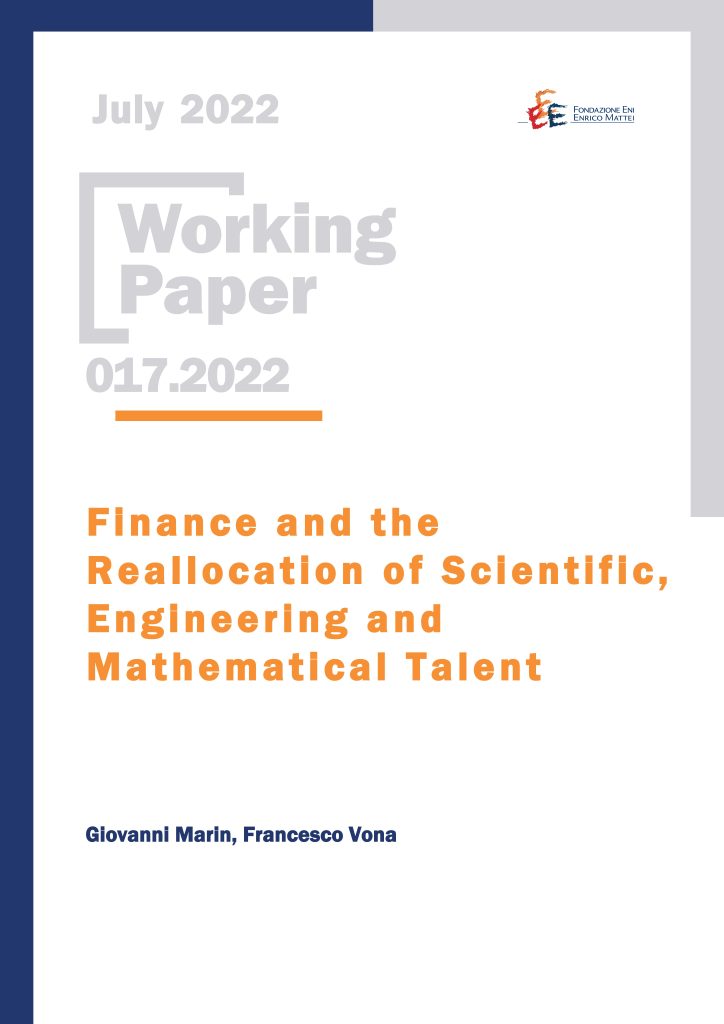Finance and the Reallocation of Scientific, Engineering and Mathematical Talent

25.07.2022
Giovanni Marin (University of Urbino ‘Carlo Bo’, SEEDS, Ferrara); Francesco Vona (University of Milan, Fondazione Eni Enrico Mattei, and OFCE)
E24, G28, I26, J24, J31
Finance industry, finance occupations, STEM labour markets, reallocation, technological change
The US financial sector has become a magnet for the brightest graduates in the science, technology, engineering and mathematical fields (STEM). We provide quantitative bases for this anecdotal fact for the US, over the period 1980-2019 and with a specific focus on the last decade where information on major fields of study is available. First, we show that long-run educational upgrading of finance was biased towards STEM graduates, especially for postgraduates, and accelerated in the last decade. Second, the STEM upgrading also occurs within finance and business occupations, matching a task reorientation towards mathematics in those occupations. Third, STEM reallocation towards finance is more pronounced among experienced workers peaking at prime age. Fourth, the reallocation of STEM is associated with large wage premia in finance, which are heterogeneous across occupations, age groups, degrees and along the wage distribution. Returns to STEMs are higher than returns to other degrees in finance and become very high in finance and managerial occupations at the top of the distribution, especially for postgraduates.
***
Suggested citation: G. Marin, F. Vona, ‘Finance and the Reallocation of Scientific, Engineering and Mathematical Talent’, Nota di Lavoro 017.2022, Milano, Italy: Fondazione Eni Enrico Mattei
